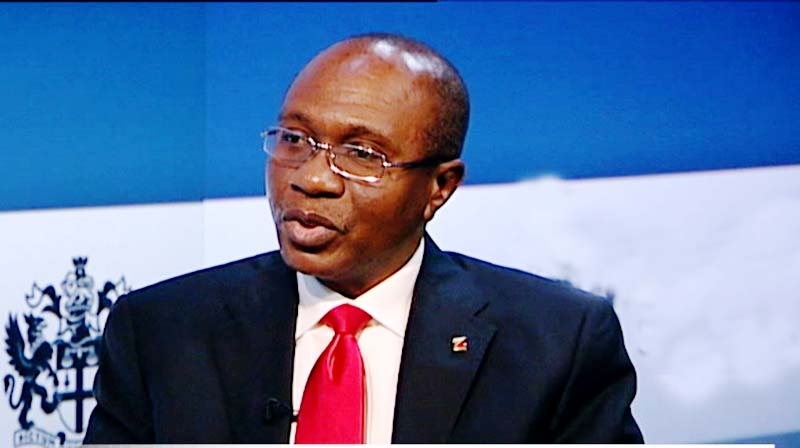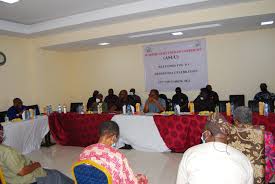Business
Banks on precipice as naira plunges
Published
9 years agoon
By
Olu Emmanuel
By ODUNEWU SEGUN
WITH a total loan portfolio of about N13 trillion and a higher levels of Non-performing loans which rose sharply by 78 per cent year-on-year to N649.63 billion in 2015, Nigerian banks are on the edge of precipice unless a drastic measure is taken to curb the imminent danger in the sector.
Compounding the woes of these banks is the devaluation of the naira. With the naira officially exchanging for over N330 and going for as high as N400 at the parallel market, and 42 per cent of loans extended by the bank in dollars, their balance sheets are seriously bleeding.
Adducing reasons for the high non-performing loans, a source with a new generation bank who asked not to be named, said loans were given to some powerful Nigerians considered as “sacred cows” without tangible and verified collateral.
“They knew from day one that they wouldn’t pay because of internal connivance. These debtors had given part of the loan as gratification to some staff in order to circumvent the procedure. That is why many of them have no tangible collateral and there is no way you can force them to pay. On the long run, such loans are classified as bad debt. We have rescheduled and extended many of them. But the more you reschedule, the more you will be eating into your profit margin,” he said.
Speaking on the challenges, Chief Executive Officer of Financial Derivatives Limited, Rewane Bismarck, said the huge non-performing loans hanging on the necks of the banks may lead to a total collapse of the affected banks.
According to him with their profitability already affected by the dwindling economy, it may affect their liquidity and eventual solvency.
ALSO SEE: Remove fixed interest rates on credit cards, CBN tells Banks
He, however, expressed the hope that the Federal Government’s stimulus package and other measures aimed at enhancing growth would work and help tackle the economic storm.
Also an economist, Prof. Pat Utomi, said good mergers and acquisitions strategy could help prevent crisis in the banking sector and avoid a regulatory risk.
“A good mergers and acquisitions strategy can prevent regulatory risk. A situation where the central bank will take action on a bank and there will be panic and everybody begins to run helter-skelter to withdraw their money is not good for a bank. If the fundamentals of a bank are beginning to get challenged, it is better a discussion is held with another bank and it is acquired. What creates a problem is regulatory risk.”
“There is concern around the evolution of banks’ capital adequacy if the naira continues to weaken,” the Chief Economist, Standard Chartered Africa, Razia Khan, said. She added, “As the naira weakens, FX loans are likely to be problematic.”
Recall that since June after the devaluation of the naira, the currency has lost double that against the dollar. Overall, 42 per cent of loans extended by Nigerian banks are in dollars. If the naira falls far enough, it will force some banks to recapitalise in order to have enough naira to stay within financial stability limits.
As a means of cutting overhead costs, some banks have been laying off staff, closing branches and slashing earnings forecasts, but some are unlikely to survive the storm, analysts say.
According to London-based analysts Exotix, UBA, Diamond and Guaranty Trust Bank have the highest ratio of dollar loans at 50 per cent apiece. Diamond Bank declined to comment, while UBA and GTB said they saw no need for recapitalisation due to the devaluation of the currency.
Findings revealed that First Bank of Nigeria net profit fell from N86 billion in 2014 to N15 billion in 2015, following rising impairments on Nigeria’s economy, owing to falling crude oil prices.
First Bank is not alone as far as NPLs is concerned. Extracts of Union’s Bank financials presented at recently showed that NPL ratio grew from N9.9 billion in full year(FY) 2012 to N26.6 billion in first quarter (Q1) 2016.
Fidelity Bank’s total impairment charge in 2015 Financial Year (FY) was N5.7bn. The bank also wrote off N2.7b as bad loans in the 2015 financial year, while its gross earnings dropped by 2.6 per cent in its unaudited results for the half year ended June 30, 2016.
For FCMB, it is already planning to raise between 10 and 15 billion of Tier II capital to boost its balance sheet and will target its retail investors for the offering.
According to its CEO, Ladi Balogun, FCMB capital adequacy ratio was close to the regulatory limit of 15 percent of assets at mid-year, and that it was undertaking the capital raising to provide an additional cushion.
Also as part of shoring up its capital base, Diamond Bank recently said it was considering raising fresh capital and selling some assets in order to strengthen its capital base. Diamond Bank’s capital adequacy ratio had fallen to 15.6 percent of assets by mid-year from 18.6 percent a year ago.
You may like


CBN announces economic resurgence, declares $6.83bn balance of payments surplus


External reserves under Nigerian Presidents 1979 – 2024


Interpol places 3 Nigerians on Red Alert for stealing $6.2m from CBN


Breaking: Banks to pay diaspora remittances in Naira


HURIWA demands DSS, EFCC to investigate CBN over Naira scarcity


I’m humbled to be appointed CBN Gov – Cardoso
Trending

 Business1 week ago
Business1 week agoGoogle announces N3bn investment to boost Nigeria’s AI talent, digital safety infrastructure

 Crime1 week ago
Crime1 week agoMan faces trial over N132m fraud allegation

 Latest4 days ago
Latest4 days agoTinubu appoints Christopher Musa new Defence minister

 Latest5 days ago
Latest5 days agoObaseki counters Okpebholo’s remarks, vows to enter Benin when ready

 Politics1 week ago
Politics1 week agoCOAS congratulates 8 retiring generals on meritorious service

 Business5 days ago
Business5 days agoFG threatens tough sanctions on banks, financial firms aiding terrorism financing

 Education1 week ago
Education1 week agoASUU urges FG to implement Briggs committee agreement

 News1 week ago
News1 week agoFG unveils ECOWAS biometric identity card, highlights security gains

